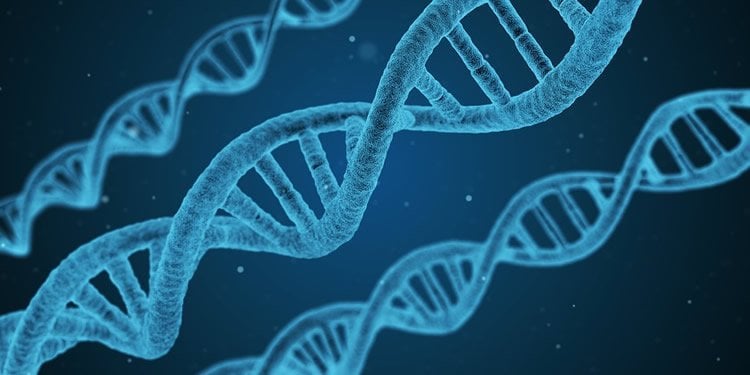Summary: Researchers discover structural changes in two genes that increase the risk for Tourette syndrome.
Source: NIH/NINDS.
Researchers have identified structural changes in two genes that increase the risk of developing Tourette syndrome, a neurological disorder characterized by involuntary motor and vocal tics. The study, published in the journal Neuron, was supported by the National Institute of Neurological Disorders and Stroke (NINDS), part of the National Institutes of Health.
“Our study is the tip of the iceberg in understanding the complex biological mechanisms underlying this disorder. With recent advancements in genetic research, we are at the cusp of identifying many genes involved in Tourette syndrome,” said Jeremiah Scharf, M.D., Ph.D., assistant professor of neurology and psychiatry at Harvard Medical School and Massachusetts General Hospital, Boston, and co-corresponding author of the study.
The research was part of an international collaboration co-led by Dr. Scharf; Giovanni Coppola, M.D., professor of psychiatry and neurology at the University of California, Los Angeles; Carol Mathews, M.D., professor of psychiatry at the University of Florida in Gainesville; and Peristera Paschou, Ph.D., associate professor in the department of biological sciences at Purdue University, West Lafayette, Indiana.
The scientific team conducted genetic analyses on 2,434 individuals with Tourette syndrome and compared them to 4,093 controls, focusing on copy number variants, changes in the genetic code resulting in deletions or duplications in sections of genes. Their results determined that deletions in the NRXN1 gene or duplications in the CNTN6 gene were each associated with an increased risk of Tourette syndrome. In the study, approximately 1 in 100 people with Tourette syndrome carried one of those genetic variants.
NRXN1 and CNTN6 are important during brain development and produce molecules that help brain cells form connections with one another. In addition, the two genes are turned on in areas that are part of the cortico-striatal-thalamo-cortical circuit, a loop of brain cells connecting the cortex to specific regions involved in processing emotions and movement. Studies suggest that errors in the circuit may play a role in Tourette syndrome.
Copy number variants in NRXN1 have been implicated in other neurological disorders including epilepsy and autism, but this is the first time that scientists have linked copy number variants in CNTN6 to a specific disease.
“Tourette syndrome has a very strong genetic component but identifying the causal genes has been challenging,” said Jill Morris, Ph.D., program director at NINDS. “As we find genes involved in Tourette syndrome and understand more about its biology, we move closer to our ultimate goal of developing treatments to help children affected by the disease.”

Although involuntary tics are very common in children, they persist and worsen over time in people with Tourette syndrome. Tics associated with Tourette syndrome appear in children, peak during the early teenage years and often disappear in adulthood. Many people with Tourette syndrome experience other brain disorders including attention deficit disorder and obsessive-compulsive disorder.
Drs. Scharf, Coppola, Mathews and Paschou are planning to take a closer look at the mutations using animal and cellular models. More research is needed to learn about ways in which the genes contribute to development of Tourette syndrome and whether they may be potential therapeutic targets.
Funding: This study was funded by grants from NINDS (NS040024, NS085048, NS016648, NS062691) and the Tourette Association of America.
Source: Barbara McMakin – NIH/NINDS
Image Source: NeuroscienceNews.com image is in the public domain.
Original Research: Abstract for “De Novo Coding Variants Are Strongly Associated with Tourette Disorder” by A. Jeremy Willsey, Thomas V. Fernandez, Dongmei Yu, Robert A. King, Andrea Dietrich, Jinchuan Xing, Stephan J. Sanders, Jeffrey D. Mandell, Alden Y. Huang, Petra Richer, Louw Smith, Shan Dong, Kaitlin E. Samocha, Tourette International Collaborative Genetics (TIC Genetics), Tourette Syndrome Association International Consortium for Genetics (TSAICG), Benjamin M. Neale, Giovanni Coppola, Carol A. Mathews, Jay A. Tischfield14, Jeremiah M. Scharf, Matthew W. State, and Gary A. Heiman in Neuron. Published online May 3 2017 doi:10.1016/j.neuron.2017.04.024
[cbtabs][cbtab title=”MLA”]NIH/NINDS “Genetic Gains and Losses in Tourette Discovered.” NeuroscienceNews. NeuroscienceNews, 21 June 2017.
<https://neurosciencenews.com/genetics-tourette-syndrome-6950/>.[/cbtab][cbtab title=”APA”]NIH/NINDS (2017, June 21). Genetic Gains and Losses in Tourette Discovered. NeuroscienceNew. Retrieved June 21, 2017 from https://neurosciencenews.com/genetics-tourette-syndrome-6950/[/cbtab][cbtab title=”Chicago”]NIH/NINDS “Genetic Gains and Losses in Tourette Discovered.” https://neurosciencenews.com/genetics-tourette-syndrome-6950/ (accessed June 21, 2017).[/cbtab][/cbtabs]
Abstract
De Novo Coding Variants Are Strongly Associated with Tourette Disorder
Highlights
•Exome sequencing links damaging de novo sequence variants with Tourette disorder
•De novo variants in approximately 400 genes contribute risk in 12% of clinical cases
•Recurrent de novo variants identify one high-confidence TD risk gene: WWC1
•Gene discovery will exponentially increase as additional cohorts are sequenced
Summary
Whole-exome sequencing (WES) and de novo variant detection have proven a powerful approach to gene discovery in complex neurodevelopmental disorders. We have completed WES of 325 Tourette disorder trios from the Tourette International Collaborative Genetics cohort and a replication sample of 186 trios from the Tourette Syndrome Association International Consortium on Genetics (511 total). We observe strong and consistent evidence for the contribution of de novo likely gene-disrupting (LGD) variants (rate ratio [RR] 2.32, p = 0.002). Additionally, de novo damaging variants (LGD and probably damaging missense) are overrepresented in probands (RR 1.37, p = 0.003). We identify four likely risk genes with multiple de novo damaging variants in unrelated probands: WWC1 (WW and C2 domain containing 1), CELSR3 (Cadherin EGF LAG seven-pass G-type receptor 3), NIPBL (Nipped-B-like), and FN1 (fibronectin 1). Overall, we estimate that de novo damaging variants in approximately 400 genes contribute risk in 12% of clinical cases.
“De Novo Coding Variants Are Strongly Associated with Tourette Disorder” by A. Jeremy Willsey, Thomas V. Fernandez, Dongmei Yu, Robert A. King, Andrea Dietrich, Jinchuan Xing, Stephan J. Sanders, Jeffrey D. Mandell, Alden Y. Huang, Petra Richer, Louw Smith, Shan Dong, Kaitlin E. Samocha, Tourette International Collaborative Genetics (TIC Genetics), Tourette Syndrome Association International Consortium for Genetics (TSAICG), Benjamin M. Neale, Giovanni Coppola, Carol A. Mathews, Jay A. Tischfield14, Jeremiah M. Scharf, Matthew W. State, and Gary A. Heiman in Neuron. Published online May 3 2017 doi:10.1016/j.neuron.2017.04.024






